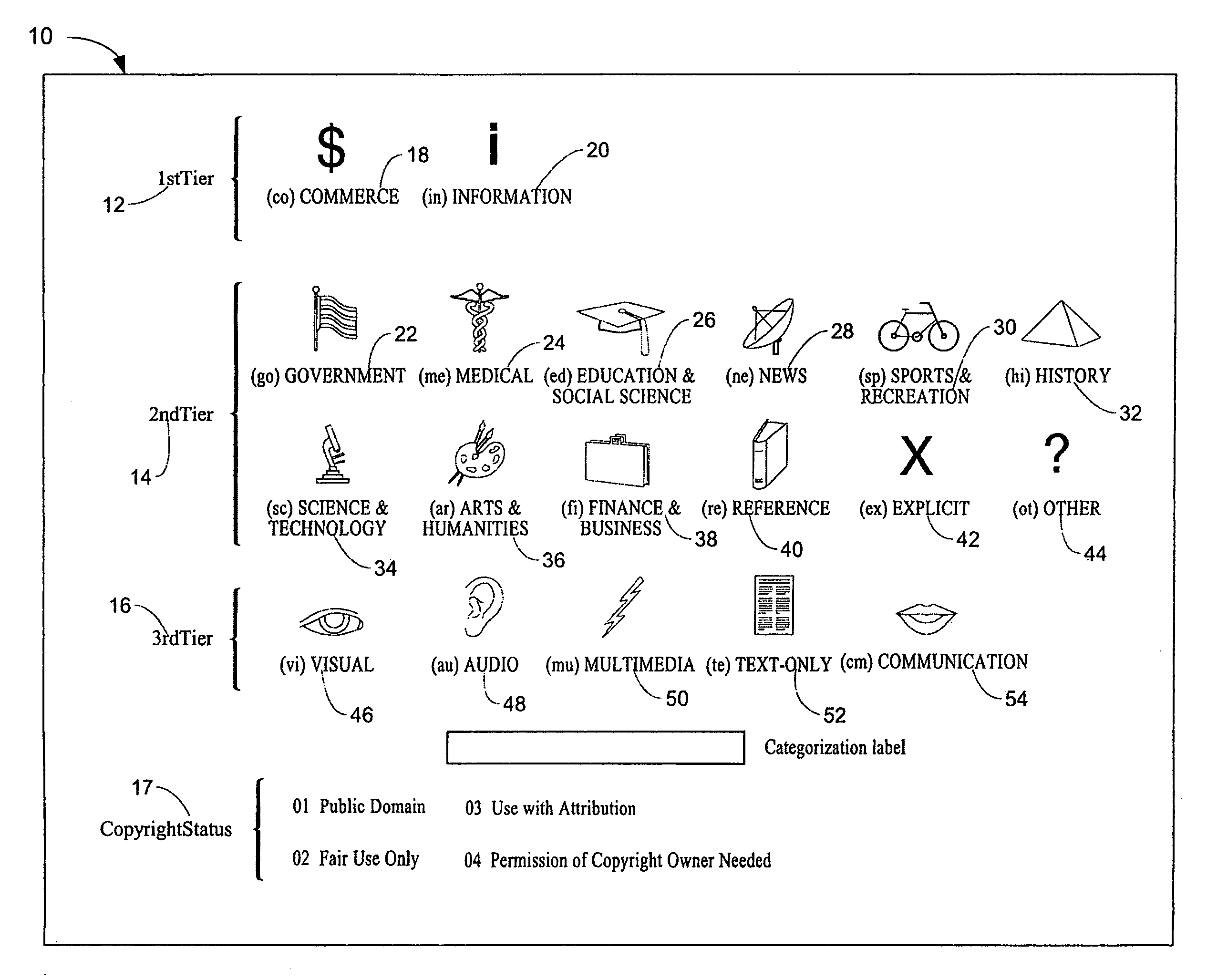Method of coding, categorizing, and retrieving network pages and sites
a network page and site technology, applied in the field of network page categorization and search, can solve the problems of not having a standardized international categorization system or catalog of information contained on the internet, requiring a high degree of cataloging knowledge, time-consuming and expensive, etc., to achieve the effect of obtaining audio or visual material, facilitating material retrieval, and facilitating the acquisition of relevant results
- Summary
- Abstract
- Description
- Claims
- Application Information
AI Technical Summary
Benefits of technology
Problems solved by technology
Method used
Image
Examples
first embodiment
[0046]the invention is a method for categorizing a page on a network, as the page is being created or during editing at a later time. The method includes the steps of providing the creator with a list of categories and providing the creator an opportunity to assign the page to one or more of the categories. The preferred categories are the categories of the three tiers 12, 14, and 16, and the categories for copyright status 17, as shown in FIG. 1. The list of categories includes at least one different indicium for each category. The indicium is preferably a universal symbol or icon that is not associated with any one language, but it may also include a combination of letters, numerals, or other characters, or symbols. The indicia preferably used are universal icons and two-letter or two-numeral indicia, as shown in FIG. 1. Thus, the indicia for commerce are “co” and the “$” symbol, while the indicium for “Public Domain” is “01.”
second embodiment
[0065]the invention is a method for searching for and locating information on a network. The method allows the user to search pages on a network that have already been categorized into any of three tiers of categories 12, 14, and 16, and copyright-status categories 17. The categorization may have been done by the creator of a page at the time the page was created or during editing at a later time.
[0066]The method provides the user with the opportunity to limit the search by selecting one or more categories from three tiers 12, 14, and 16, and one of the copyright-status categories 17, and by utilizing a keyword search. A graphical user interface, such as is shown in FIG. 3, may be provided. The user may select one or more categories from each of one, two, or three of the category tiers 12, 14, and 16, and from one or none of the copyright-status categories 17, or from none of tiers 12, 14, and 16 and from one of the copyright-status categories 17, and may or may not use the keyword ...
PUM
 Login to View More
Login to View More Abstract
Description
Claims
Application Information
 Login to View More
Login to View More - R&D
- Intellectual Property
- Life Sciences
- Materials
- Tech Scout
- Unparalleled Data Quality
- Higher Quality Content
- 60% Fewer Hallucinations
Browse by: Latest US Patents, China's latest patents, Technical Efficacy Thesaurus, Application Domain, Technology Topic, Popular Technical Reports.
© 2025 PatSnap. All rights reserved.Legal|Privacy policy|Modern Slavery Act Transparency Statement|Sitemap|About US| Contact US: help@patsnap.com



